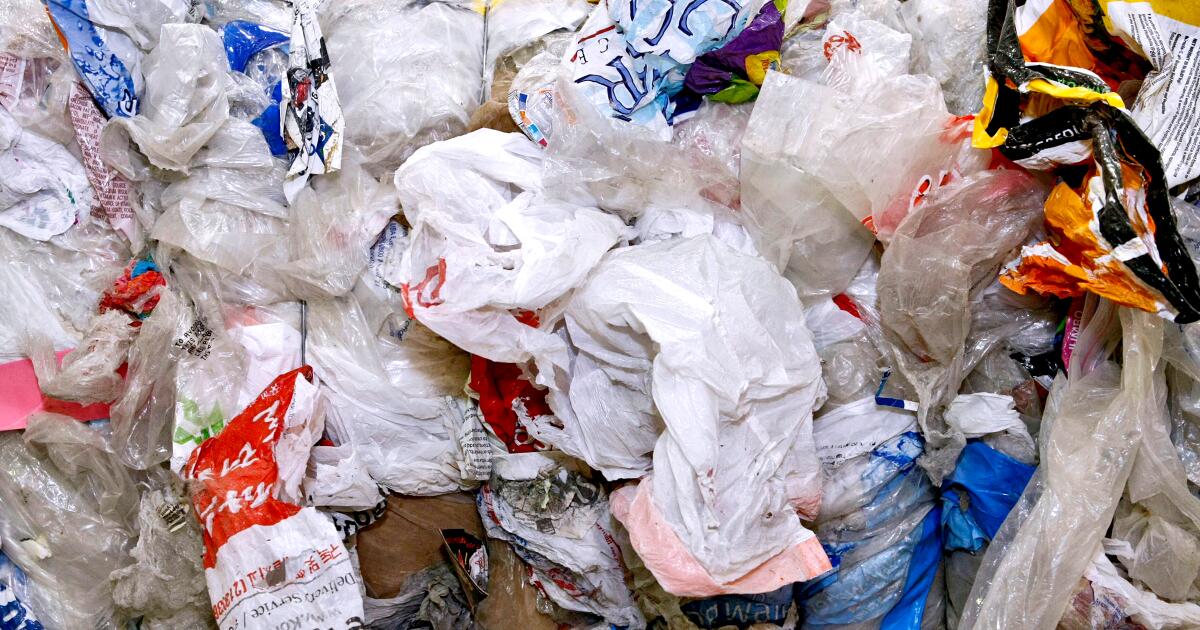On Sunday, California Governor Gavin Newsom took a significant step in the fight against plastic pollution by signing a new bill into law aimed at closing a legal loophole that has allowed plastic bag waste to proliferate in the state. This move comes nearly a decade after California voters approved a law intended to ban single-use plastic grocery bags. The new legislation is a response to the alarming increase in plastic bag waste that has occurred since the original ban was enacted in 2014.
### The Background of California’s Plastic Bag Ban
In 2014, California became the first state in the U.S. to implement a ban on single-use plastic bags at grocery stores and retail checkout lines. The law was designed to reduce plastic pollution and its harmful effects on the environment. However, it permitted stores to offer “reusable” bags, which included paper and high-density polyethylene plastic bags. This provision inadvertently created a loophole that plastic manufacturers exploited, arguing that these bags could be reused, thus undermining the original intent of the legislation.
### The Rise in Plastic Waste
Recent reports, particularly one released by CALPIRG, a consumer advocacy group, have highlighted a troubling trend: the volume of plastic bag waste in California has surged since the 2014 ban. In 2014, approximately 157,385 tons of plastic bag waste were discarded in the state. By 2021, that figure had skyrocketed to 231,072 tons—a staggering 47% increase. Even when accounting for population growth, the per capita waste rose from 4.08 tons per 1,000 people in 2014 to 5.89 tons per 1,000 people in 2021.
### Key Provisions of the New Law
The newly signed law, which will take effect on January 1, 2026, specifically targets checkout bags, excluding those used for produce or food items that could lead to contamination, such as meat. Additionally, starting January 1, 2028, the definition of a recycled paper bag will change, requiring it to contain more than 50% recycled material, up from the previous threshold of 40%. This shift aims to further reduce the environmental impact of packaging materials.
### Environmental Advocacy and Public Support
Environmental advocates have hailed the new legislation as a critical step forward in California’s ongoing battle against plastic pollution. Jenn Engstrom, state director of CALPIRG, emphasized the health risks associated with plastic bags, noting that they break down into microplastics that contaminate drinking water and pose threats to public health. Christy Leavitt, Oceana’s plastics campaign director, echoed these sentiments, stating that plastic bags are among the most dangerous types of plastic for ocean wildlife. She urged state and national leaders to adopt policies that address plastic pollution at its source.
A statewide poll conducted by Oceana in 2022 revealed overwhelming public support for reducing single-use plastics, with 86% of California voters backing local and state policies aimed at this goal. The poll also indicated that 92% of voters expressed concern about single-use plastic products, including grocery bags, beverage bottles, and takeout containers.
### Reactions from Environmental Groups
Laura Deehan, state director of Environment California, expressed relief that the updated law would finally eliminate plastic grocery bags as a threat to wildlife. She remarked, “Nothing we use for just a few minutes should pollute the environment for hundreds of years.” This sentiment was echoed by Nick Lapis, director of advocacy for Californians Against Waste, who noted that Californians had voted to ban plastic bags in 2016 through Proposition 67, which reinforced the 2014 ban. He praised the new law as a testament to California policymakers’ commitment to environmental issues over time.
### The Veto of Microplastics Legislation
In a related development, Governor Newsom also vetoed AB 2214, a bill that aimed to require state agencies to develop guidance on addressing microplastic pollution. In his statement, Newsom referenced a 2018 law that directed the Ocean Protection Council to create a statewide microplastics strategy. He argued that the new bill was premature, as the council is already tasked with reporting its findings to the state Legislature by December 2025.
### Looking Ahead
As California moves forward with this updated legislation, the implications for both the environment and public health are significant. The new law not only reinforces the state’s commitment to reducing plastic waste but also sets a precedent for other states grappling with similar environmental challenges. With the support of the public and advocacy groups, California continues to position itself as a leader in the fight against plastic pollution, aiming to create a cleaner, healthier environment for future generations.
